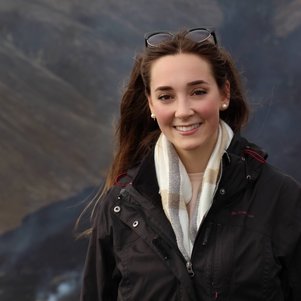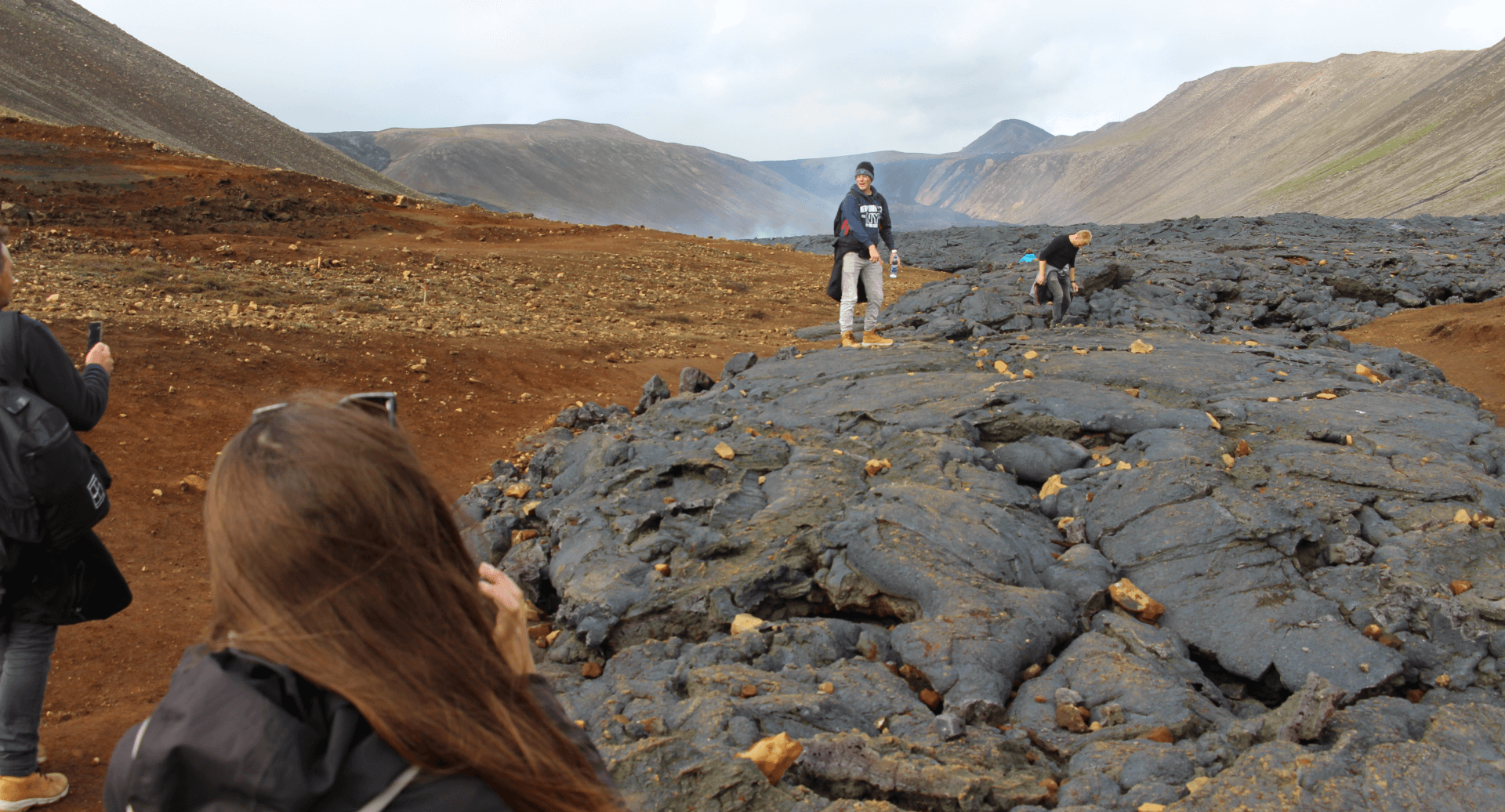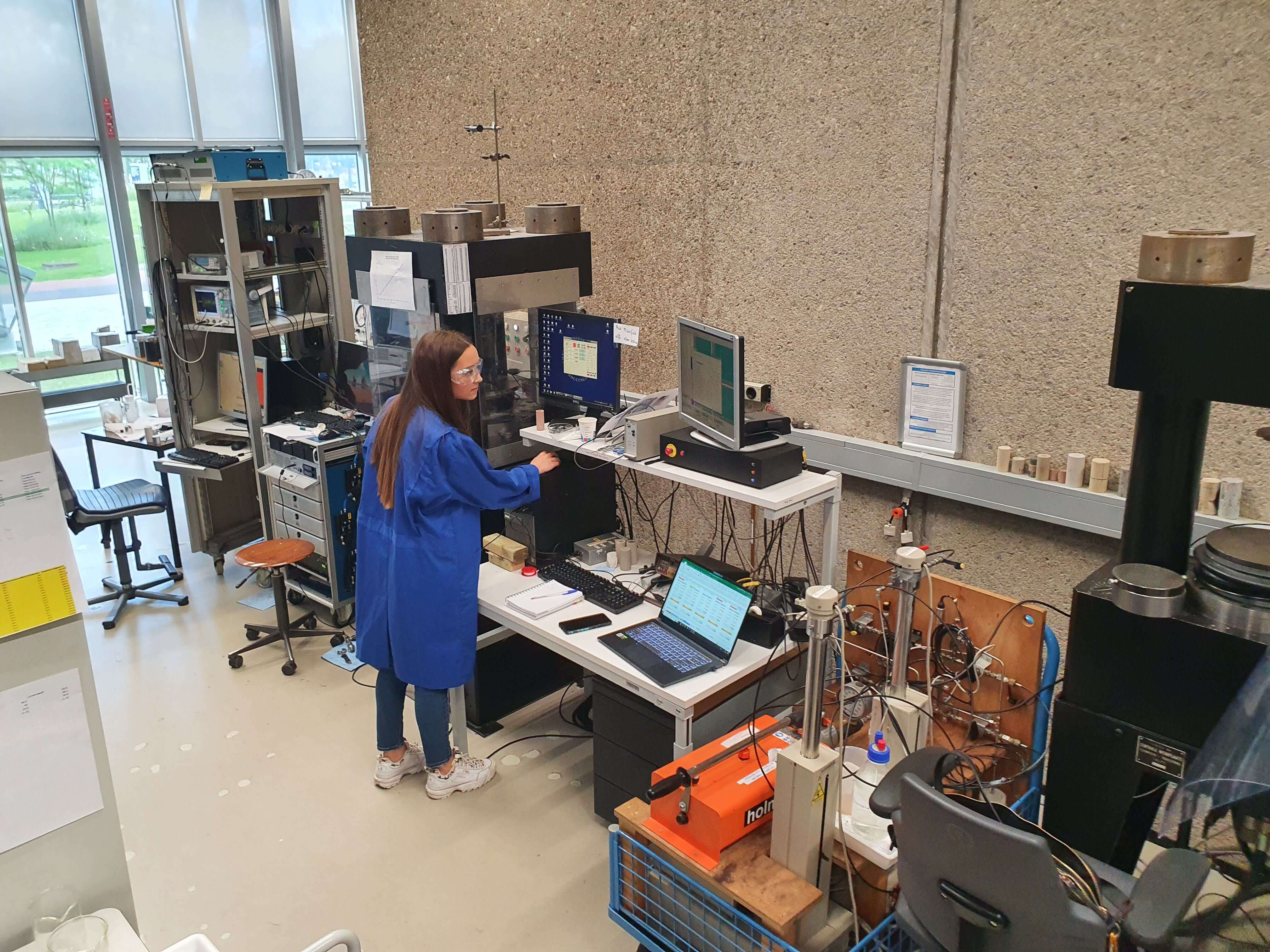The volcanic island has excellent conditions for geothermal energy. However large amounts of CO2 are produced during the process, making it less of a clean alternative. Researchers discovered the volcanic rocks could hold a solution for this, as they transform captured CO2 into solid minerals that can safely be stored in the subsurface. All the reason for Elara to further investigate these special rocks!
How did this project come your way?
At the beginning of my master's degree, I quickly knew I wanted to do research in Rock Mechanics. Fortunately, there was room to do this in my master's thesis. When I was looking for such a project, I got the opportunity to go to Iceland as part of a larger research consortium: Synergetic Utilisation of CO2 Storage Coupled with Geothermal Energy Deployment (SUCCEED). When I got back from Iceland, I started working on my thesis about the rocks that are here.
What makes the subsurface in Iceland special?
Iceland is in a unique geological and tectonic environment. At the boundary of where the Eurasian and North American tectonic plates move apart, is also a mantle plume, where hot, solid rock rises form the earth's core. As a result, Iceland has excellent geothermal resources. While generating geothermal energy, they realised they were also producing substantial amounts of CO2 as a by-product. To reduce these emissions, they found a way to permanently store CO2 on a large scale in volcanic rock by converting it into solid minerals and pumping it back into the ground.
What was your part in the research?
In this project I have participated both in the seismic survey, in which we installed a series of monitoring lines in the vicinity of the Hellisheiði power plant and collected pieces of rock as samples for later analysis back in the lab at the university. I am currently analysing these rocks to find out what their mechanical properties are, that is, how they behave under different stress conditions.
What knowledge of your MSc programme could you apply?
I have a geological background and it has been interesting during the MSc Applied Earth Science to also look precisely at the different energy sources that use the subsurface which I know a lot about. It was fun to approach this from an engineering point of view. Even more so, this project gives me the opportunity to connect all the geological knowledge I've gained previously with the engineering side to better understand the complexity of the challenges we face in geothermal energy production, and see how we can approach this from a more sustainable angle.
What were you most looking forward to beforehand?
The first time I heard about CO2 mineral capture in Iceland was during the last year of my undergraduate and I found it fascinating. I really wanted to visit the place where all of this is done and learn more about the whole process. This did not disappoint; I still find it fascinating and really enjoy being able to do more research on this topic.
What was the biggest challenge?
Deciding exactly what my thesis was about was a big challenge. I was participating in a large research consortium and several research groups are collaborating in this project. So, it was important to clearly define the scope of my work. Fortunately, my supervisors helped me a lot in this process.
What did you learn from this project?
The most important thing I have learned is to apply the theoretical knowledge to a real situation and to face the different challenges and decision making along the way. In the real world, often not everything goes as expected. Some tests do not work or there is not enough time to carry out some experiments. It is important to be flexible and adapt to changes that may occur.
What did you enjoy the most?
What I have enjoyed the most was being able to carry out both field work and laboratory work. This has been of great help in understanding the system as a whole and the geological uncertainties that can play a role in each part of the process.
What would you most like to see happen now regarding research?
Volcanic rocks are very common on the planet. I would love to see this technology, which combines geothermal energy production with CO2 capture, injecting it back into the ground and storing it there, spread globally. I think it can have a significant impact for emission reduction not only within the geothermal sector but also in other industry sectors.
How is the research progressing?
Currently, I am completing the laboratory tests for the mechanical properties and corresponding seismic data and processing this data. There is still a lot of work to do and many challenges to face. These experimental studies mainly provide important input parameters for future studies. For example, developing models intended to better understand the subsurface to optimise energy production in volcanic geothermal reservoirs and mineral storage of CO2 .
What are your own plans after this?
I would most like to help accelerate the energy transition. Energy demand is one of the biggest challenges we face today. Personally, I think it is crucial for a successful transition to ensure the supply of all forms of energy. After graduating, I would like to put into practice what I have learned so far to be part of that transition in some way, perhaps in a strategic area such as underground gas storage or geothermal energy.
Publication date: October 2022

Elara Redondo Garcia
Master Programme:
Applied Earth Sciences







